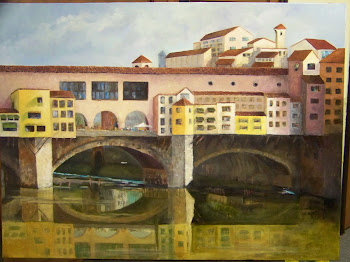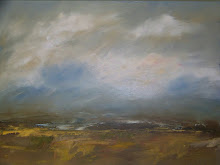Blackberry Shrub
For close to 25 years, I have been the keeper of a few of my Grandmother Johnston’s handwritten recipes. They are yellowing with age, showing faded ink. I find them fascinating, and they give me the feeling of a connection to Ann Baker Robnett Johnston.
Ann was born in Deer Park, in Boone County, Missouri in 1895. She was the Daughter of John Thomas Robnett and Harriet Lyle Whaley Robnett. From the recipes that I cherish, I can see her Grandmother Whaley influenced her in the kitchen also, just like mine did.
One recipe caught my attention and has been on my list of recipes to research. Ever heard of Blackberry Shrub? Me either. But I am sitting here with the recipe right by me, wondering how many years ago she wrote it on this yellowed card. I am sure it has to be at least 75 years ago, probably longer.
At the top of the card she wrote
“Blackberry Shrub…Grandmother Whaley’s….. Fine”
I think she liked it, so why wouldn’t I try it?
One good reason….it isn’t blackberry season here in the Midwest. I’ll have to wait until summer. That gives me lots of time to keep researching.
Recently I ran across a bog called Kitchen Konfidence
http://www.kitchenkonfidence.com/2011/08/blackberry-shrub
There I found a posting on Blackberry Shrub! It was posted on August 4, 2011 by Brandon Matzek. I have emailed him for some possible assistance with an ingredient that my grandmother has listed….it looks like “tarbic acid”. When googled, nothing comes up as tarbic, except one spot, my own blog from 2009. I am no help at all!
On the Kitchen Konfidence blog, Brandon gives the recipe’s history as follows:
“The origin of these drinking vinegars dates back to the Roman Era where acetified wine diluted with water was consumed as an everyday thirst quencher.* Shrubs came to America via England during the Colonial Era.”
Brandon’s recipe calls for a blackberry syrup, balsamic vinegar and fresh rosemary.
Blackberry Shrub
2 3/4 cups blackberries
3 cups water
1 1/2 cups white sugar
3/4 cup good quality balsamic vinegar
3 sprigs of rosemary
Add blackberries, water and sugar to a medium saucepan and cook on low until the berries are soft (10 – 15 minutes). Stir occasionally with a wooden spoon, slightly mashing the berries each time you stir.
Pour the mixture through a fine mesh basket strainer then return to the saucepan. Discard solids. Add balsamic vinegar and rosemary sprigs. Increase the heat to medium-low and bring the mixture to a slow boil.**
Take the mixture off of the heat and carefully remove the rosemary sprigs. Let cool then transfer to a pitcher or bottle. Chill shrub in the refrigerator before using.
Makes about 4 cups.
From his blog I was led to an article in the New York Times from November, 2008. why it did not pop up on Google is a mystery to me! Here is a excerpt from that article:
If chugging vinegar sounds curious to you as well, be apprised that this centuries-old practice has only recently been abandoned. The Romans diluted acetified wine with water to make an everyday thirst quencher called “posca”, and vinegar has been touted as a cure-all in Asia and Europe for centuries. The practice was brought to the Colonies from England, where it was commonly referred to as shrub, a term confusingly used both for a nonalcoholic drink and for one mixed with rum. In the United States, shrub seems to have thrived particularly in the South, gaining enormous popularity with the temperance movement. Many Southerners still fondly remember grandmother making up “raspberry vinegar” in the summer.
The vinegars that one drinks are not, happily, your toe-curling shelf variety. The gamut is varied and complex, with vinegars produced from every conceivable fruit and grain. (In Japan, where the trend exploded several years ago, some department stores have vinegar sommeliers.) They’re most easily categorized as pure vinegars, compound vinegars and additive vinegars. A pure fruit vinegar is a labor of love and skill in which ripe fruit is crushed, fermented and acetified. The most concentrated, intense vinegars are made this way, the best of them requiring no sweetening in dilution. A compound vinegar is what most home recipes call for: fresh fruit is macerated in a bulk vinegar, typically wine or cider, then boiled to make a shrub (or what the French call a gastrique), which can be added to water, soda or an alcoholic drink. Shrub can replace citrus in any number of commonplace cocktails with three-dimensional results. Additive vinegars, which dose mass-produced vinegar with extracts or artificial flavorings and a sweetener, are to be avoided. So read the label carefully.
The world of vinegars can be sampled at a click, from an Italian pure raspberry one called Etruria — so delicate it can be sipped neat — to the Japanese Yokoi Ma-Kurozu, a black malt vinegar made from glutinous brown rice and barley. (Coupled with soda water, Yokoi provides the satisfying heft and tang of a dark English bitter.) ChefShop.com in Seattle carries some of the best small producers worldwide. It is currently one of very few American suppliers for the European cult producer Acetoria, which makes small batches of superb vinegars from sources as disparate as tomato, fig, apple-balsamic and trockenbeerenauslese dessert wines. Tait Farm Foods in Pennsylvania markets its own shrubs at taitfarmfoods.com. Its ginger shrub, mixed with soda water, dark rum and lime, makes an unusually piquant Dark ’n’ Stormy.
But to taste the best of these Model T-era coolers, you must make your own — particularly in the summer or autumn, when abundant local fruit is on hand. Modest mess aside, shrubs couldn’t be simpler to make: find a good-quality apple-cider or wine vinegar, soak any fresh fruit in it for a week, then add sugar, boil for an hour, strain and bottle it up. It can keep in the fridge for months. Unsurprisingly, the vinegar you begin with makes an enormous difference. The savior of the home shrubbist is Bragg, an excellent, widely available unfiltered and unpasteurized apple-cider vinegar. My first effort was a classic raspberry, which turned out to be so surprisingly delicious that I felt as if I’d broken some secret code. I then went a bit shrub mad, boiling up vats and fobbing off bottles on puzzled friends. Blueberries made a dense, showy shrub, thick with pectin. Black currant with white-wine vinegar produced a lithe, perfumey cassis. As a sour-cherry version boiled away on the stove, my 4-year-old said she smelled cherry pie. The resultant elixir was so good that I couldn’t bring myself to give any away. No matter; now that citrus season is swinging in, I’ll redeem myself by wrapping up bottles of blood-orange or Meyer lemon and ginger shrubs for my newly enlightened circle.
For a recipe for shrub, I took Brandon’s advice to go to nytimes.com/tmagazine. There I searched for Shrub recipe. Thus is what I found:
Shrub
Makes about 1 1/2 to 2 quarts, depending on fruit used. These measurements can be played with quite liberally, as some fruits contain more natural sugars.
2 quarts fruit, use any fruit, pears, figs, raspberries, cherries
1 liter apple-cider vinegar (preferably Bragg) or other vinegar.
1/2 to 1 cup raw sugar
Soda water
Ice.
1. Rinse the fruit and discard any rot. Place in a large non-reactive or ceramic pot and mash for several minutes with your hands or a wooden spoon to break up. Pour in enough vinegar to cover and top with a lid. Let macerate at room temperature for a week, stirring once a day. (Do not be alarmed by the smell or the sludge on top.)
2. After a week, stir in 1/2 cup of the sugar and gently boil for 1 hour, stirring occasionally. Cool slightly, then strain. (The smell created from boiling is a bit offensive, so open the doors and windows.)
3. Make a test shrub: cool 3 to 4 tablespoons of the fruit mixture. Fill a 20-ounce glass with ice. Add water or soda water to almost the rim, then add the chilled fruit mixture. Taste to determine sweetness. If it is too tart, add sugar to the fruit mixture, little by little, while still hot. Cool fully and funnel into bottles. Will keep indefinitely in refrigerator.
Pears! Yipee! Pears are available now! I love the sound of Blackberry Shrub, and I will make it, next summer. But for now, I might as well try the pear, don’t you agree?
If you are interested, I will be at The Tasteful Olive this Friday evening, January 20th, 6 to 9 PM for Downtown Overland Park’s 3rd Friday Celebration. You will find some wonderful vinegars as well as olive oils in this shop owned by Jeanne and Jay Mackay.
Hope to see you there!







